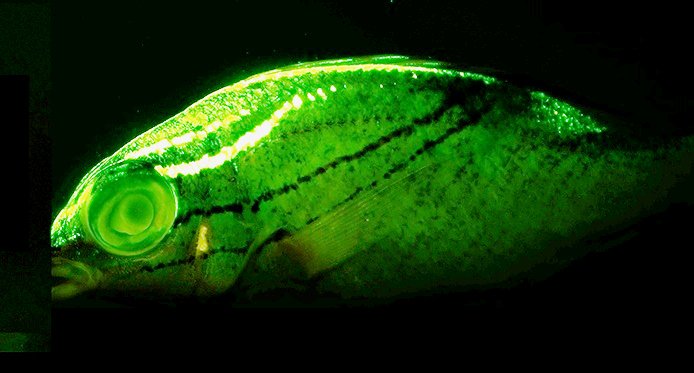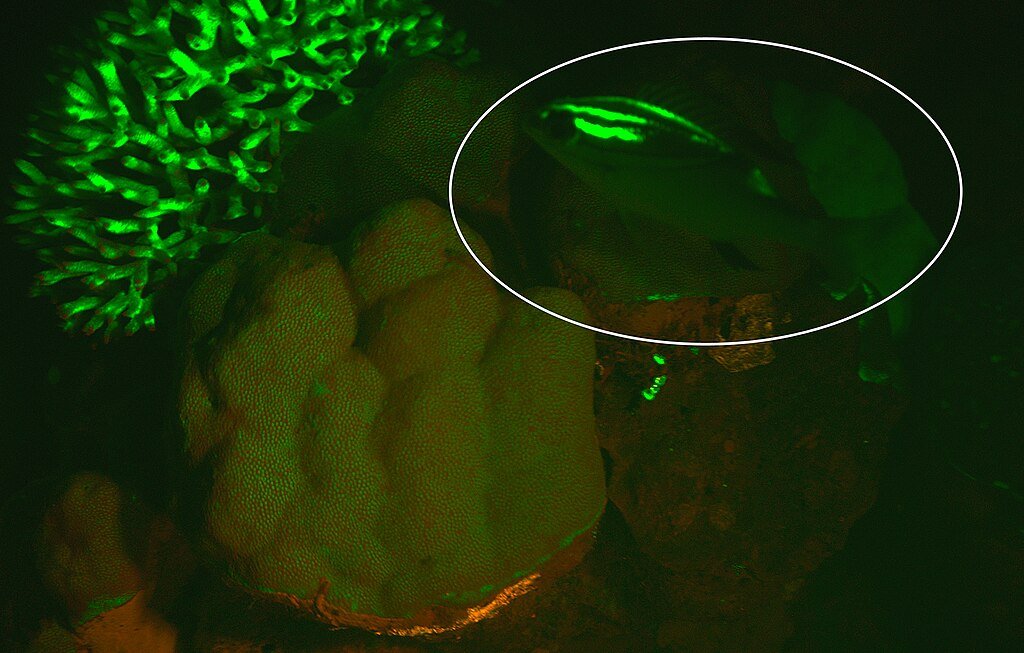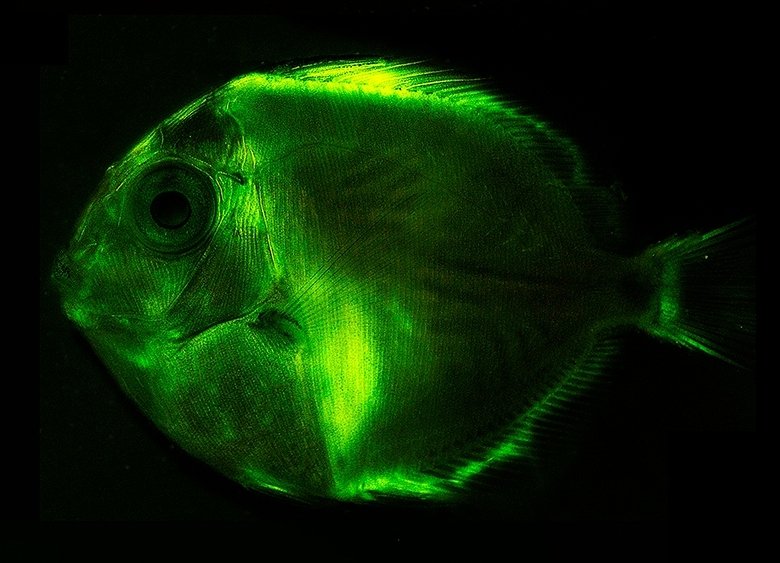New research has revealed that biofluorescence in marine fishes is far more ancient and widespread than previously believed. Studies show that this glowing trait has evolved independently more than 100 times over the past 112 million years. Led by scientists from the American Museum of Natural History, the findings highlight the evolutionary significance of biofluorescence and its strong association with coral reef environments.
What Is Biofluorescence and Why Does It Matter

Biofluorescence is the ability of organisms to absorb light—typically blue or ultraviolet—and re-emit it as a different color, often green, yellow, orange, or red. In marine fishes, this phenomenon is not just a visual spectacle; it may serve critical functions such as camouflage, communication, mate attraction, or predation. The studies identified 459 species of biofluorescent teleosts, including 48 species previously unknown to exhibit this trait.
Coral Reefs as Hotspots of Evolutionary Innovation
The research found that fish living in or around coral reefs evolve biofluorescence at nearly ten times the rate of non-reef species. This rapid diversification appears to have accelerated after the Cretaceous-Paleogene extinction event 66 million years ago, which wiped out non-avian dinosaurs and reshaped marine ecosystems. As coral reefs recovered and expanded, they likely provided new ecological niches that favored the evolution of biofluorescent traits.
A Spectrum of Color and Complexity
Using specialized imaging techniques, researchers documented a broader range of biofluorescent colors than previously reported. These include multiple wavelengths across the green, yellow, orange, and red spectrum. The diversity of colors suggests that biofluorescence may serve different purposes across species and environments, while others may rely on it for stealth or signaling.
Evolutionary Origins and Future Questions
The earliest evidence of biofluorescence in fishes dates back to eels from the Early Cretaceous period. Since then, the trait has independently emerged in numerous lineages, making it one of the most recurrent evolutionary adaptations in marine vertebrates. Despite its prevalence, many questions remain about the genetic and ecological mechanisms driving this phenomenon. Future research will likely explore how environmental pressures and visual systems co-evolve with biofluorescent traits.
Conclusion

The discovery that fish biofluorescence evolved over 100 times in the last 112 million years underscores its evolutionary importance, particularly in reef ecosystems. As scientists continue to uncover the genetic and ecological underpinnings of this glowing adaptation, biofluorescence may offer new insights into marine biodiversity, communication, and the resilience of life in changing oceans.
Source:





